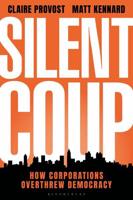Publisher's Synopsis
This book captures a history of the North Atlantic Treaty Organization (NATO) logistics fuel operation in Afghanistan and considers its lessons for the broader logistics community. The research focuses on a small group of individuals and how they came to supply over three million liters of fuel daily to Afghanistan with very little upfront investment from the International Security Assistance Force (ISAF) nations. The book describes how these individuals managed NATO fuel operations outside of traditional agencies like the NATO Support Agency (NSPA) and the worldwide U.S. Defense Logistics Agency (DLA) Energy. In addition, this book examines NATO's operation in Afghanistan as compared to similar historical examples of large-scale coalition fuel efforts over long lines of communication. These historical case studies assist in framing the context of NATO logisticians' accomplishments and the level of risk they accepted in supplying fuel to the NATO-led ISAF mission. Finally, the NATO case study provides a model for coalition support in a time when nations are unwilling or unable to provide logistic support to their forces.










